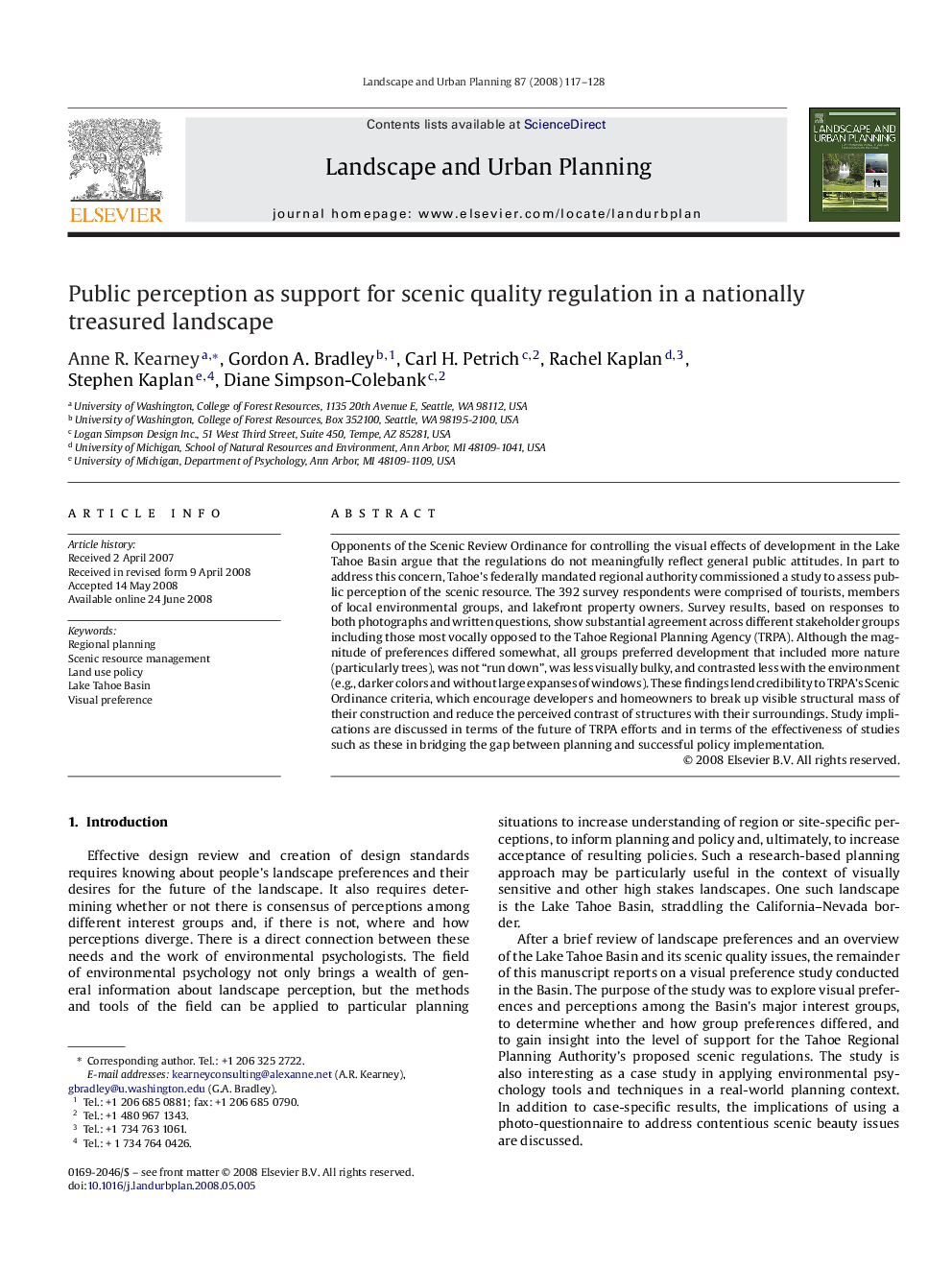| Article ID | Journal | Published Year | Pages | File Type |
|---|---|---|---|---|
| 1050359 | Landscape and Urban Planning | 2008 | 12 Pages |
Opponents of the Scenic Review Ordinance for controlling the visual effects of development in the Lake Tahoe Basin argue that the regulations do not meaningfully reflect general public attitudes. In part to address this concern, Tahoe's federally mandated regional authority commissioned a study to assess public perception of the scenic resource. The 392 survey respondents were comprised of tourists, members of local environmental groups, and lakefront property owners. Survey results, based on responses to both photographs and written questions, show substantial agreement across different stakeholder groups including those most vocally opposed to the Tahoe Regional Planning Agency (TRPA). Although the magnitude of preferences differed somewhat, all groups preferred development that included more nature (particularly trees), was not “run down”, was less visually bulky, and contrasted less with the environment (e.g., darker colors and without large expanses of windows). These findings lend credibility to TRPA's Scenic Ordinance criteria, which encourage developers and homeowners to break up visible structural mass of their construction and reduce the perceived contrast of structures with their surroundings. Study implications are discussed in terms of the future of TRPA efforts and in terms of the effectiveness of studies such as these in bridging the gap between planning and successful policy implementation.
